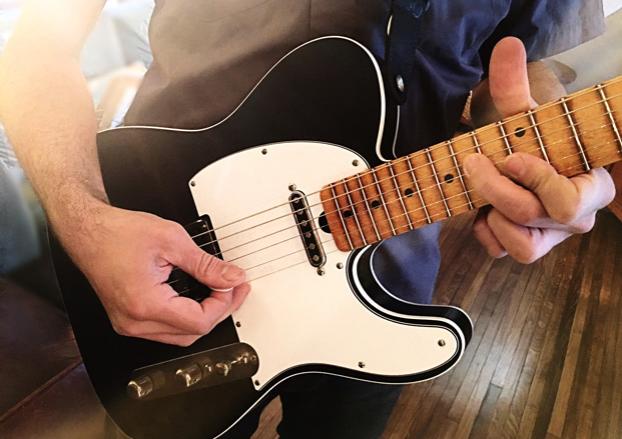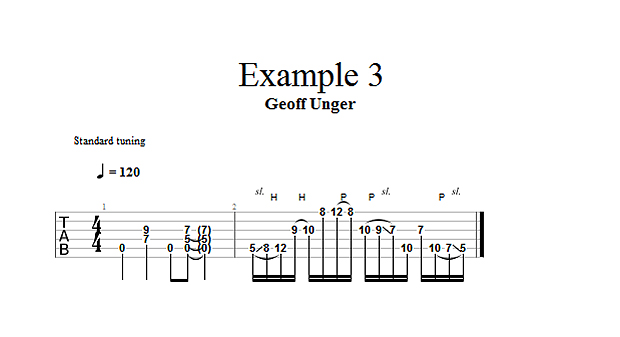Two-Note-Per-String Major/Minor Seventh String Skipping

I'm going to assume your fingers are all warmed up and ready for this lesson.
If you're not warmed up yet and want some new ideas for warmup exercises, see my previous column, Fretboard Mechanics & Beyond: Warming Up is Important.
That should get you started.
This week, I'd like to expand even further on an idea I presented there. In my previous post, I showed you a warmup idea I use that incorporates two-note per-string string skipping using major and minor sevenths.
I also showed those patterns where I eventually added some tapping to that idea. Here I'd like to show some non tapping sequences I use in my own playing. I've found that the concept of these two-note per-string major and minor sevenths can lead to some musical and melodic ideas, so it translates well into a phrase in a solo or run or as part of a rhythm.
These past two weeks, I've been in the studio recording rhythm guitar tracks and solos for some of my band's songs for our second release. The songs I've been recording have been written for a short time but long enough so they've gone through the "live test" and are current songs in our set list. I never really analyzed what I was doing in these solos.
When composing the solos at the time, I usually just let my ear guide me with out a guitar in my hand. I just know what key I'm in and the type of "feel" I want to put across in the song during the solo. If it sounds good to me and the guys in the band, then we keep it!
All the latest guitar news, interviews, lessons, reviews, deals and more, direct to your inbox!
Now that the solo tracks are laid down, and listening back to them, I realized that in a couple of the songs I subconsciously incorporated those major and minor 7 patterns into some runs in the solos.
This example (EXAMPLE 1) comes from a song called "No One Else," which is in the key of D minor. In this example, I incorporated a Dm blues pentatonic lick and went into an F major 7 to G minor 7 string-skipping pattern to eventually lead into a key change to E minor.

This next example (EXAMPLE 2) is another fun to play idea in C minor. I generally use this type of example to lead into or resolve into another expression inside a solo. You'll notice that I slide into some of these notes. It gives a more fluid type of sound.

EXAMPLE 3 shows how I sometimes incorporate these major and minor 7 ideas into a rhythmic expression. It's kind of a call-and-response idea. First, by calling out with some chords and responding with a musical pattern. In this case, the response is after the chords by using the two-note per-string patterns.

Once you get these ideas under your fingers, try to expand on them. In these examples, I use hammer-ons and pull-offs. Try picking all or most notes. It gives a completely different sound. Try to vary the hammer-ons and pull-offs with picking. It all depends on what type of sound or emotion you're trying to put across!
Geoff Unger is the guitar player and vocalist for three piece, NYC based, metal band Symptom 7. A graduate of Berklee College of Music, Geoff studied jazz arranging and composition while under the tutelage of Jon Finn. Geoff also has appeared in Mike Varney's Hometown Heroes. A multi-styled guitar player, Geoff regularly performs live with Symptom 7 and as a hired live/studio guitar player. Symptom 7 will be in the studio this fall recording the followup to their 2007 debut, Symptom 7 - Vol. 1. Check out Symptom 7 on Facebook.
